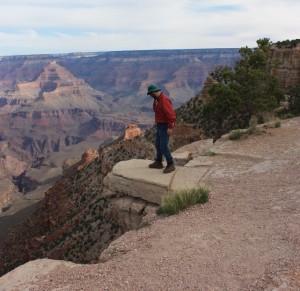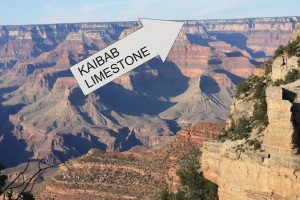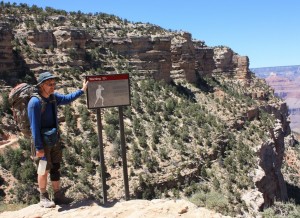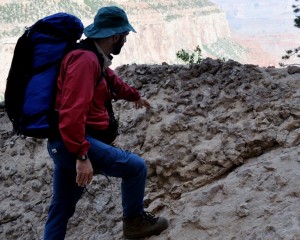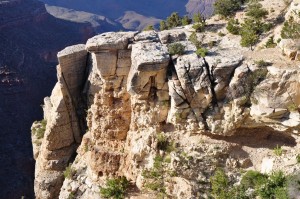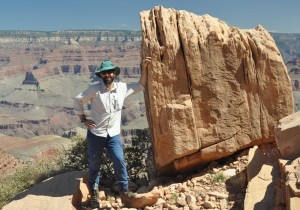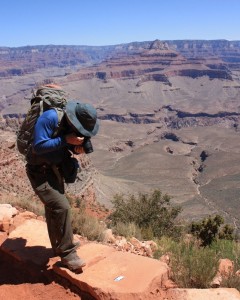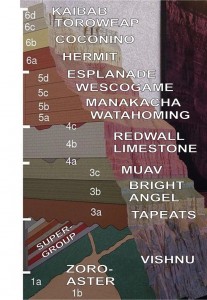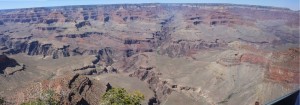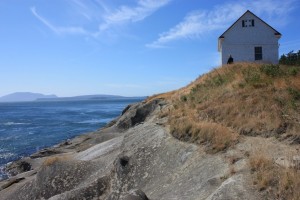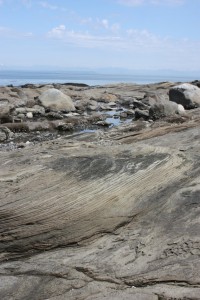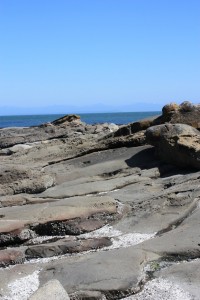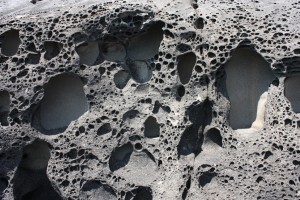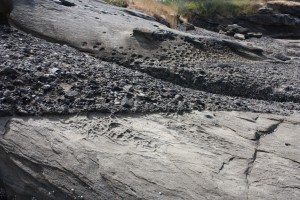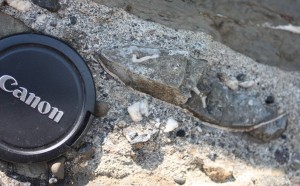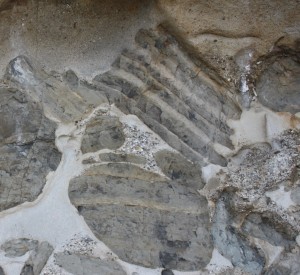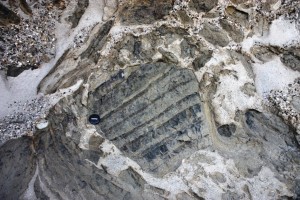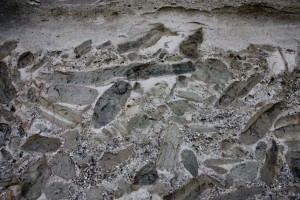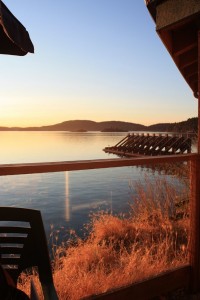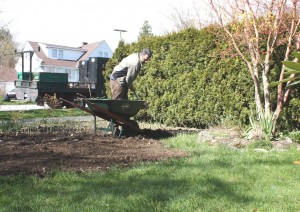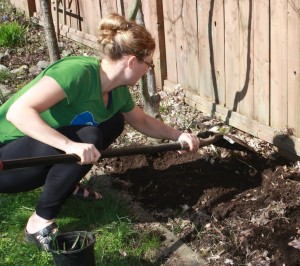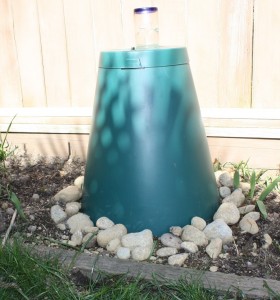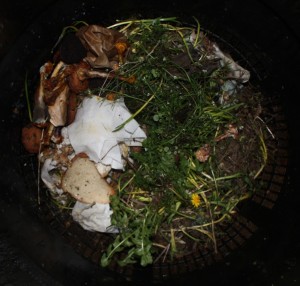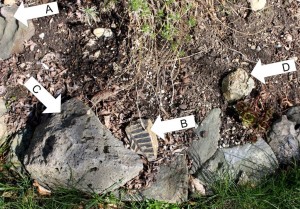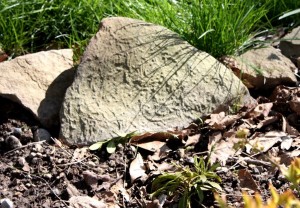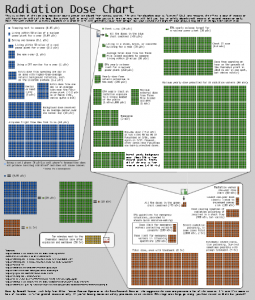In one of my earlier lives, I was a geologist.
Once a geologist, you sort of always are a geologist. It gets in your brain. I am going down the Grand Canyon next week with a friend who happens to be a Professor of Earth Sciences, and we plan to spend a lot of time cracking rocks and talking stratigraphy. I have already downloaded geologic sections and taken prep notes on the major units, their interpreted settings and anticipated trace fossil assemblages. I do this stuff for fun. However, in an earlier life, I actually did geology for a living, not as a hobby.
As a geologist, I was member of the Geological Association of Canada, attended several of their meetings, and even presented at one of them (and had my presentation topic expanded into a
paper in a special volume of the Canadian Journal of Earth Sciences published by the GAC).
As a sedimentology student, I also read a whole lot of Andrew Miall. His
“Principles of Sedimentary Basin Analysis” is in every sedimentologist’s bookcase, along with a raft of his papers on fluvial sedimentology (the deposits left by rivers). I cited that book and two other Miall papers in my Masters thesis, relying on his descriptions of alluvial fan deposits to interpret some of the facies in my field area, his description of bi-modal clast distributions resulting from traction flows, and his interpretations of peripheral foreland basin deposit sequences. He is a giant on the subject of the geology of terrestrial sedimentary basins, and a petroleum geologist of significance world-wide, not just in Canada.
The subject itself is topical, interesting, and well within the scope of geology (Geologists are the most qualified to interpret historical climate indicators, working with paleontologists, palynologists, isotope geochemists, and other fields that fit loosely under the big tent of Geology- the study of the solid earth.) The problem arrives in the
outline for the symposium . Every line of it makes me cringe:
“The scientific debate about climate change is far from over.”
Lifting this language right from the Climate Denier playbook, it is clear from the opening line the approach that will be taken below. This line pre-supposes that there is a single debate about Climate Change, and by that supposition, the two positions are: A) humans are definitely causing unprecedented changes in the earth’s climate by their burning of carbon-based fossil fuels and the nations of the word need to take immediate and drastic action to reduce atmospheric CO2 or face significant social, environmental and economic consequences; and B) wrong.
“Some of the projections of climate change and its consequences contained in the 2007 Report of the Intergovernmental Panel on Climate Change (IPCC) have been called into question.”
Ugh. Yes they have. Admittedly, the 2007 report put out by the IPCC got a few things wrong, or failed to fully support a few of the statements within. And there has been a lot of science done since 2007, some of which matches the IPCC projections, some of it that suggests the IPCC projections were pessimistic, and the majority suggesting the IPCC projections underestimated the scale of the problem. But the IPCC report is a single document in a sea of research, and of all the documents, it is the most politically tainted. Why single this one out for discussion in a scientific meeting in 2011?
“This symposium will address some of these issues and present a geological perspective on the scientific debate. “
Good, Geology has lots to say about historic climate conditions. Sounds like an important topic to discuss.
“For example, what is the relative importance of water vapour versus carbon dioxide as a medium of heat retention in the atmosphere?”
Huh!?! H2O vs. CO2 in the atmosphere? How is that a geologic topic? This is simple chemistry and physics, we know H2O is a larger greenhouse gas than CO2, no geology required. The only reason this topic is being brought up is because it is a favourite amongst climate deniers, even after it has been thoroughly debunked. This topic has no relation whatsoever to the “climate debate”, it is a red herring.
“How important have variations in solar output and in sunspot levels been in determining energy input to the Earth’s atmosphere?”
Huh!?! Is this even a debate? More solar output means more input to the Earth’s atmosphere, the relationship is linear. This is not a debate (and not really a geology topic either, although some geologic methods allow estimation of historic solar output directly or by proxy). Another red herring. Of course, this is not in any way relevant to the current observed warming, but they digress.
“Is the current global temperature regime now warmer than the Medieval Warm Period or the Holocene Hypsithermal?”
OK, This is an excellent topic for geologic investigation. We should be able to use our multiple lines of geologic evidence (although these events are so recent, it is more pedology than geology) to determine the straight-forward answer to this question. I’m not sure what the relevance is… oh, wait, here it comes….
“This is a significant question, given that many damaging ecological, faunal and weather changes have been predicted based on such warming. Yet Earth and its assemblage of life forms clearly survived these and even earlier exceptionally warm periods.”
Here is where the real intellectual dishonesty comes in. Yep, the Earth survived climate change in the past. Actually, at the end of the Maastrichtian, it survived a pretty big climate disruption. Of course nothing larger than a chicken survived, all the planet’s apex predators were killed, the dominant form of sea life was made extinct, along with 90% of vertebrate species, but hey, the earth and life went on. That said, I don’t think any of us want to experience that type of event in our lifetime.
As for the events he actually cited, the MWP was probably (and I say probably, as there is actually some debate in the mainstream scientific community on this) not warmer than today globally. It was certainly as warm as today in Northern Europe, and certainly cooler than today in regions of the tropical south Pacific, but the global temperature average is not as well established. It is also important to know that start and end of the MWP in northern Europe were gradual events, taking centuries for any change to become apparent, and they nonetheless cause huge disruptions to society, to food supplies, and to the natural environment. The current measured warming is happening at a rate 50-100x that rate. How will we adapt this time?
“Is it possible that other causes, such as the density and ubiquity of the human presence on Earth, rather than climate change, may be the cause of the observed deterioration in many environmental indicators?”
Huh? Is this a geologic topic? Is this really what a bunch of mineral and petroleum geologists should be studying? And what the hell is implied by the question? That overpopulation and resource use are problems we need to worry about, instead of worrying about climate change? How about we worry about both, and recognize they are both the same freaking problem!
Ok, so Miall wrote a provocative abstract to attract an audience to his symposium. You don’t get to be an eminent Petroleum geologist with out a few sales skills. Luckily, the GAC provides abstracts on-line , so we can look through the actual presentations and pick out the real science here. Should be fun, and I will more in future posts.
But as a satart, let’s look at hte Keynote: Oh, oh. It started bad. I see the Keynote is noted Australian climate denier (and mining geologist) Ian Plimer . Looking at Plimer’s Abstract does not instill confidence. Check out how in the last paragraph, instead of summarizing findngs and speculating on implications, as one is wont to do in a scientific abstract, he uses it to pile up non-sequitor climate denier catch phrases…
“Humans have adapted to live on ice, in mountains, in the desert, in the tropics and at sea level and can adapt to future changes. During interglacials, humans have created wealth; populations grow; glaciation is heralded by famine, starvation, disease, depopulation. Humans, although not the dominant biomass of Earth, have changed the surface of the planet. Pollution kills, CO2 is plant food, H2O vapour is the main greenhouse gas. Climate models throw no new light on climate processes”
In order, that paragraph can be summarized as:
- Climate change isn’t a problem, we’ll adapt! (debatable)
- Global warming is good! (ridiculous)
- People have impacted the planet in many ways! (non-sequitor)
- Pollution is bad! (generally true, but irrelevant)
- CO2 is good, so it can’t be pollution! (does the same go for zinc?)
- Water vapour is the problem! (demonstrably not true)
- Climate models don’t work! (bullshit. how does he feel about mineral deposit models?
He actually pre-emptively Gish Gallops. Loads on the BS so thick, it would take more than a 40 minute keynote to address how wrong his thinking is.
I will opine more as I get time to go through the other abstracts, but I want to leave with an paraphrased quote I once heard from a paleoclimatologist I know:
“AGW is founded in Physics, all was can don in geology is test it. Unfortunately, every time geology and physics have disagreed in the past, it was always the physics that had it right”
